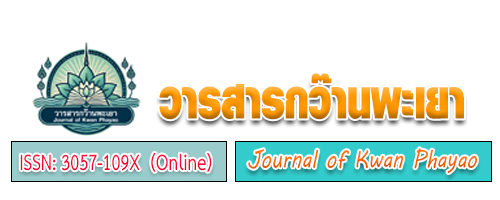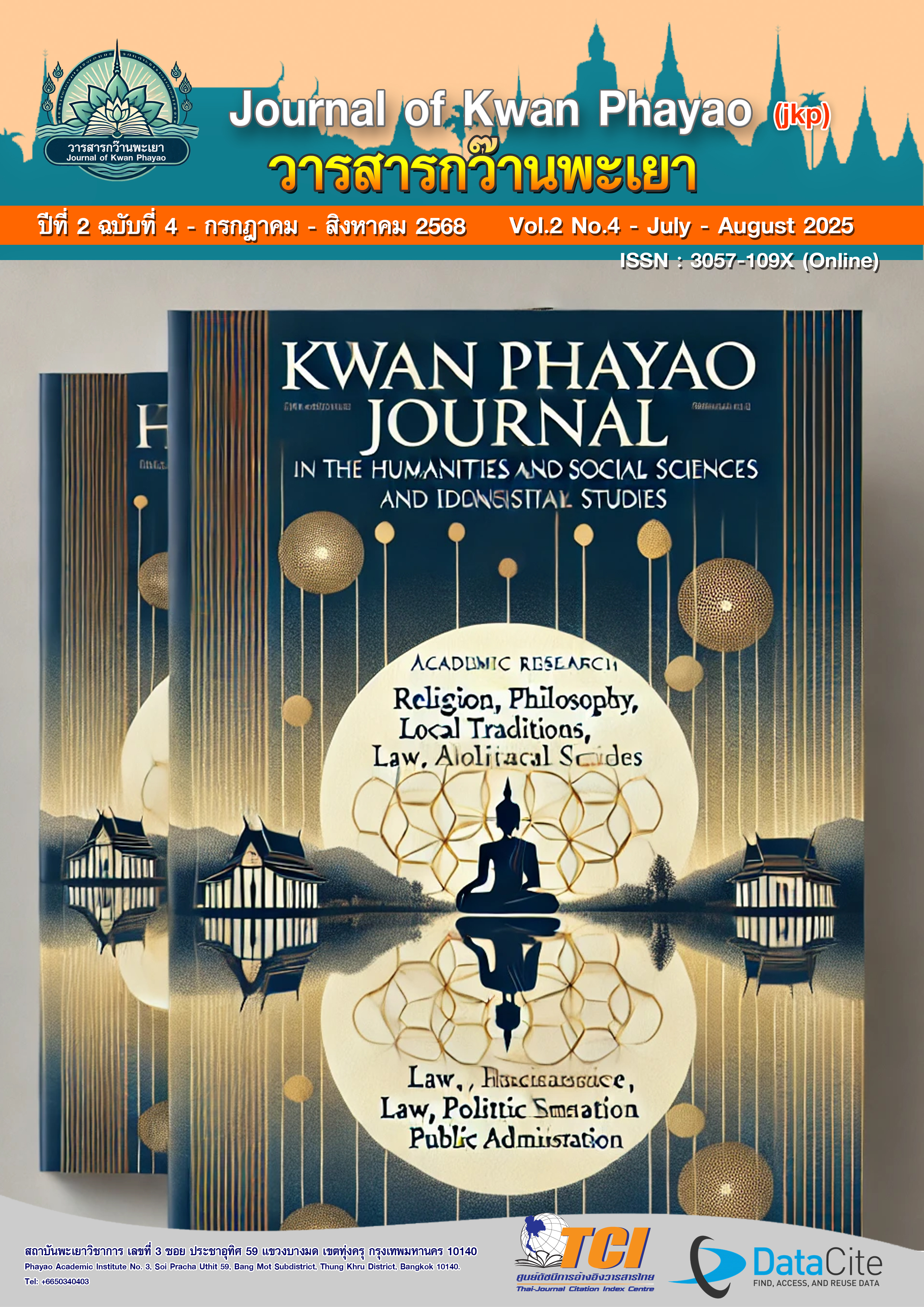บทบาทของเครือข่ายสังคมออนไลน์ต่อการขับเคลื่อนประชาธิปไตย ยุคดิจิทัล
คำสำคัญ:
เครือข่ายสังคมออนไลน์, ประชาธิปไตยดิจิทัล, การมีส่วนร่วมทางการเมือง, ข่าวปลอม, พื้นที่สาธารณะบทคัดย่อ
บทความนี้มุ่งศึกษาและวิเคราะห์บทบาทของเครือข่ายสังคมออนไลน์ต่อการขับเคลื่อนประชาธิปไตยในยุคดิจิทัล โดยเน้นการทำความเข้าใจกลไกและผลกระทบที่เกิดขึ้นในมิติทางการเมือง สังคม และวัฒนธรรม พบว่าเครือข่ายสังคมออนไลน์ทำหน้าที่เป็นพื้นที่สาธารณะใหม่ที่เปิดโอกาสให้ประชาชนสามารถแลกเปลี่ยนความคิดเห็น ตรวจสอบอำนาจรัฐ ระดมทรัพยากรเพื่อจัดตั้งการเคลื่อนไหว และสร้างวัฒนธรรมพลเมืองดิจิทัลที่เข้มแข็ง ผลเชิงบวกที่สำคัญ ได้แก่ การเพิ่มการมีส่วนร่วมทางการเมือง การสร้างการรับรู้และเข้าถึงข้อมูลอย่างกว้างขวาง และการเอื้อต่อความโปร่งใสในการกำกับดูแล ขณะที่ผลเชิงลบ ได้แก่ การแพร่กระจายของข่าวปลอม การแบ่งขั้วทางการเมือง และการถูกครอบงำโดยรัฐหรือกลุ่มทุน กรณีศึกษาทั้งในไทยและต่างประเทศ เช่น การเคลื่อนไหวของเยาวชนไทย Arab Spring และ Hong Kong Protests ชี้ให้เห็นว่า แม้เครือข่ายสังคมออนไลน์จะมีพลังในการขับเคลื่อนประชาธิปไตย แต่ผลลัพธ์ขึ้นอยู่กับโครงสร้างทางการเมืองและระดับการควบคุมในแต่ละบริบท บทความนี้เสนอแนวทางเชิงนโยบายที่สำคัญ ได้แก่ การสร้างกลไกสนับสนุนสิทธิเสรีภาพทางดิจิทัล การเสริมสร้างการรู้เท่าทันสื่อ การพัฒนากฎหมายที่สมดุล และการสร้างความร่วมมือระหว่างรัฐ เอกชน และภาคประชาชน เพื่อให้เครือข่ายสังคมออนไลน์เป็นพลังบวกต่อการพัฒนาประชาธิปไตยที่ยั่งยืน
เอกสารอ้างอิง
Allcott, H., & Gentzkow, M. (2017). Social media and fake news in the 2016 election. Journal of Economic Perspectives, 31(2), 211–236.
Bertot, J. C., Jaeger, P. T., & Grimes, J. M. (2010). Using ICTs to create a culture of transparency: E-government and social media as openness and anti-corruption tools for societies. Government Information Quarterly, 27(3), 264–271.
Castells, M. (2012). Networks of outrage and hope: Social movements in the Internet age. Polity Press.
Chadwick, A. (2013). The hybrid media system: Politics and power. Oxford University Press.
Dahlberg, L. (2011). Re-constructing digital democracy: An outline of four ‘positions’. New Media & Society, 13(6), 855–872.
Freedom House. (2022). Freedom on the Net 2022. Freedom House.
Fuchs, C. (2014). Social media: A critical introduction. Sage.
Habermas, J. (2006). Political communication in media society: Does democracy still enjoy an epistemic dimension? The impact of normative theory on empirical research. Communication Theory, 16(4), 411–426.
Kurbalija, J. (2016). An introduction to Internet governance (7th ed.). DiploFoundation.
Livingstone, S. (2014). Developing social media literacy: How children learn to interpret risky opportunities on social network sites. Communications, 39(3), 283–303.
Loader, B. D., Vromen, A., & Xenos, M. (2014). The networked young citizen: Social media, political participation and civic engagement. Information, Communication & Society, 17(2), 143–150.
MacKinnon, R. (2012). Consent of the networked: The worldwide struggle for Internet freedom. Basic Books.
Sinpeng, A. (2021). Opposing democracy in the digital age: The yellow shirts in Thailand. University of Michigan Press.
Sunstein, C. R. (2017). #Republic: Divided democracy in the age of social media. Princeton University Press.
Tufekci, Z. (2017). Twitter and tear gas: The power and fragility of networked protest. Yale University Press.
United Nations. (2016). Report of the Human Rights Council on the promotion, protection and enjoyment of human rights on the Internet. United Nations General Assembly.
Bennett, W. L., & Segerberg, A. (2012). The logic of connective action: Digital media and the personalization of contentious politics. Information, Communication & Society, 15(5), 739–768.
Chadwick, A. (2013). The hybrid media system: Politics and power. Oxford University Press.
Coleman, S., & Blumler, J. G. (2009). The Internet and democratic citizenship: Theory, practice and policy. Cambridge University Press.
Dahlberg, L. (2001). The Internet and democratic discourse: Exploring the prospects of online deliberative forums extending the public sphere. Information, Communication & Society, 4(4), 615–633.
Dahlberg, L. (2011). Re-constructing digital democracy: An outline of four ‘positions’. New Media & Society, 13(6), 855–872.
Habermas, J. (1989). The structural transformation of the public sphere: An inquiry into a category of bourgeois society. MIT Press.
McNair, B. (2011). An introduction to political communication (5th ed.). Routledge.
Papacharissi, Z. (2002). The virtual sphere: The Internet as a public sphere. New Media & Society, 4(1), 9–27.
Wasserman, S., & Faust, K. (1994). Social network analysis: Methods and applications. Cambridge University Press.



